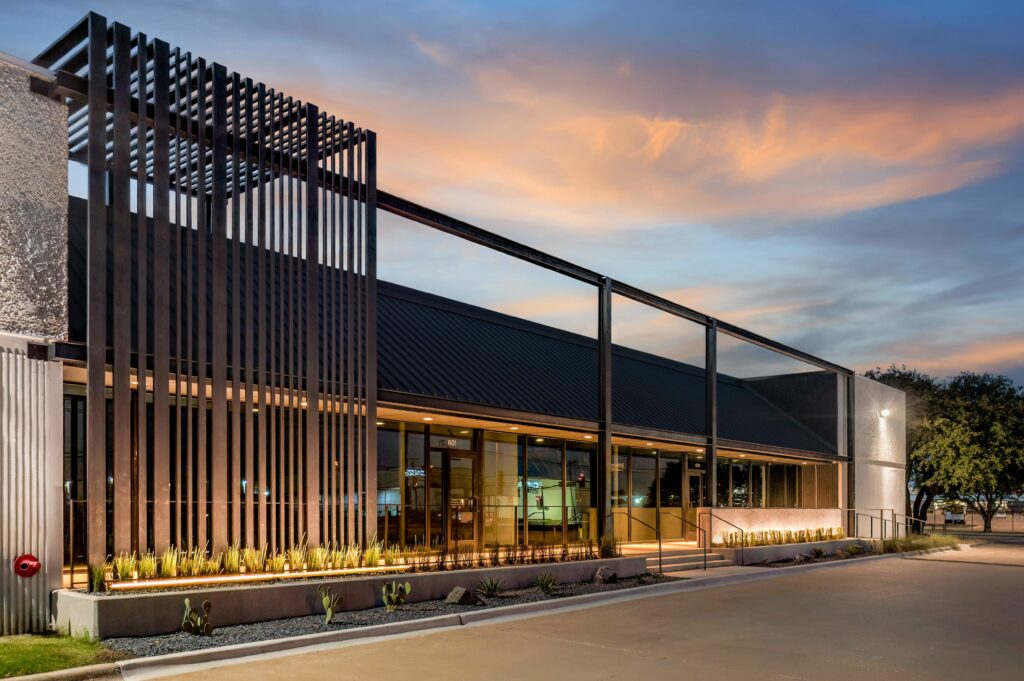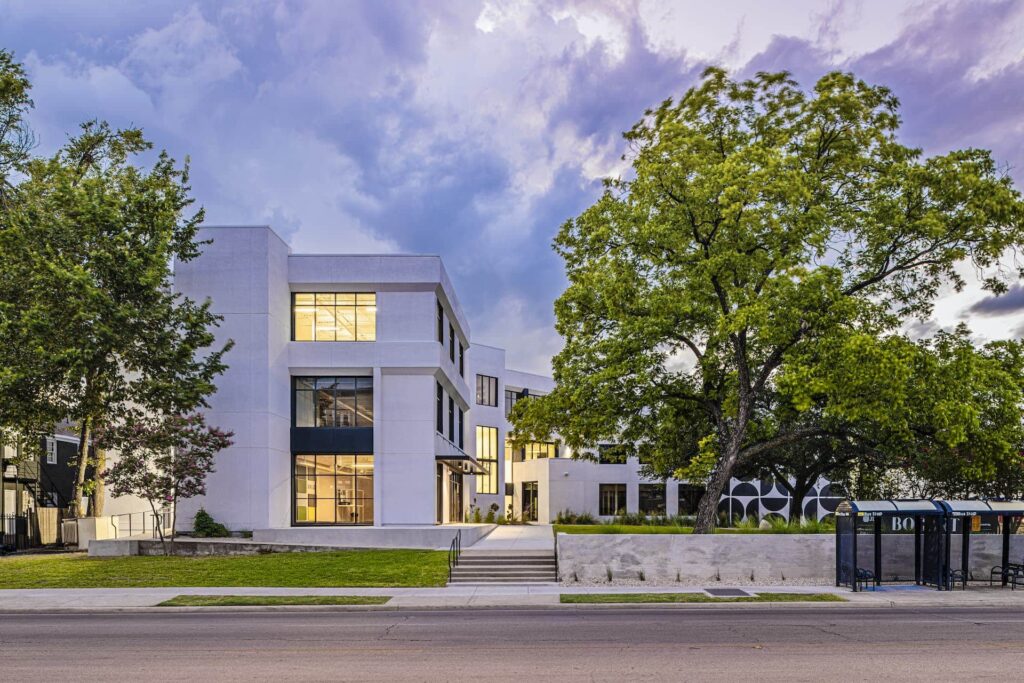November 7, 2023
Next Gen Leaders Forecast DFW Commercial Real Estate for 2024
By Allison Johnston Frizzo, D Magazine, November 7, 2023
Local commercial real estate developers from various sectors share their outlook on construction costs, the industrial market, and conversion projects in 2024.
Dallas-Fort Worth has led the nation in commercial property transactions for the third year in a row, according to the Texas A&M Real Estate Research Center, where analysis showed that DFW had $13.2 billion in total commercial property investments in the first three quarters of 2023—$400 million more than Los Angeles. Half of the investments were in apartment sales, $2.9 billion in industrial sales, and $1.3 billion in retail sales.
The not-so-good news is that DFW office transactions fell 65 percent year-over-year by Q3 2023. There are approximately $1.4 billion of distressed commercial properties and about $8.8 billion in “troubled” property deals. Another way of looking at it is that there are a lot of opportunities for developers and investors.
With such mixed results, what is the outlook for the new year? In addition to my forecast, I asked a group of successful commercial real estate developers from different sectors who share one thing in common: a Next Gen’s take on 2024.
M2G Ventures’ Co-President Jessica Miller Essl has a solution for high development prices and materials amid high demand—take empty buildings and turn them into something else.

“As construction costs continue to be unaffordable for new development related to market rates, adaptive reuse is an effective way for developers to deliver new products to the market, said Essl. “We’re seeing this across asset types from office to retail to industrial.”
During the pandemic, many workers stayed home, and getting them to return to drone-like office environments has been challenging for employers. Workers want a home away from home in a more attractive and amenity-filled setting. Between 2021 and 2022, DFW added more residents (170,396) than any other metro. As a central destination hub, the metro should set a new standard for conducting business in world-class facilities, believes Essl.
“DFW’s population growth is largely coming from other states where shorter commutes and urban living are more common,” Essl said. “We’re seeing more conversions from office to multifamily in several urban cores. The trend of adaptive reuse is the most economical and efficient way for a developer to create something special.”
M2G Ventures successfully employed adaptive reuse in creating Bogart on Ross on the old YMCA/Dallas Can Academy property. Now, it’s a light-filled modern office and retail space featuring museum-quality art, beautiful mid-century modern décor, and a host of tenant amenities, including a private library and spa showers. Zen outdoor green spaces were designed to promote mental and physical health and well-being for visitors and staff, as well as tenants.

Speaking of well-being, opportunities in the DFW’s healthcare sector are growing along with the increase in population. D CEO reported in 2022 that hospitals are moving away from central hubs to more ambulatory care facilities, including urgent care centers, retail clinics, and free-standing emergency rooms that are more convenient for patients and caregivers. Developers are finding that facilities in suburban areas are cheaper to retrofit or build and operate as rental investments.
Bill Boyd, manager of development for Caddis Partners, said, “The fundamentals of healthcare development remain strong and, in some cases, have been stimulated by the financial difficulties of hospitals as a result of COVID-19 and tightening provider reimbursements.”
As with other real estate sectors, debt capital markets are slowing healthcare construction starts, which may continue into 2024.
“Fortunately, construction costs have stabilized, but land values and costs of capital remain high, so we must be mindful of these costs when underwriting rental rates to keep rates as economical as possible,” said Boyd. “We remain optimistic that we’ll see similar construction starts in 2024 and a significant pick-up if or when interest rates come down.”
Unlike healthcare, industrial real estate is typically located away from suburban hubs, which poses its own set of challenges. In its Q3-2023 Dallas-Fort Worth Industrial Market Report, AvisonYoung.US found that DFW’s industrial sector has slowed slightly from the historic highs set in the last few years but that demand is still robust.
Vacancies were at 5.7 percent at the end of 2022, but during 2023, the market saw 23.6 million square feet of net absorption and 38.8 million square feet of leasing activity, which reflects “the region’s solid past performance.” DFW has added 8,900 industrial jobs since late 2019, an annual growth rate of 3.1 percent compared to little more than half a percent across the U.S.
DFW industrial rents are at $7.29 per square foot, an increase of 15 percent since the end of 2022 and 60 percent over the last five years, outlined the report. Such increases can shock tenants and investors. However, DFW is among the least expensive logistic hubs due to its “central U.S. location, superior road, rail, and air networks, and proximity to Mexico manufacturing.”
Todd Marchesani, founding partner of Box Investment Group, said that the industrial development pipeline will slow down in 2024 due to financing challenges. He expects to see moderate rent growth due to continued demand and population growth.
“In 2024, Capital will come back into the market desiring higher returns, which can be achieved by taking on development risk,” Marchesani said. “As a result, I believe there will be a steady pipeline of well-located industrial development break ground in 2024.”
Although construction costs have been top of mind for developers, Jason Weeks, regional vice president/division manager of Brasfield & Gorrie, said, “The construction industry in 2024 is poised to remain busy, primarily through a diversity of product types. While office and general commercial construction sputter along, mega projects in the healthcare, mission-critical, advance manufacturing, adaptive reuse, and publicly procured projects are keeping much of the construction community active.”
As for me, when I look at DFW’s rapid growth rate of 365 people a day, I don’t see that changing anytime soon. The demand for new and revitalized assets across all sectors of commercial properties continues. Our team focuses on office, medical, industrial, and retail leasing, where we are seeing this demand first-hand.
After graduating college in 2009, I had to ride out the wave of the great recession. DFW wasn’t hit hard like many areas because North Texas real estate wasn’t in a bubble. The region has become even stronger since then. I believe the business climate in DFW will get through these challenging times with continuous strong demand.
